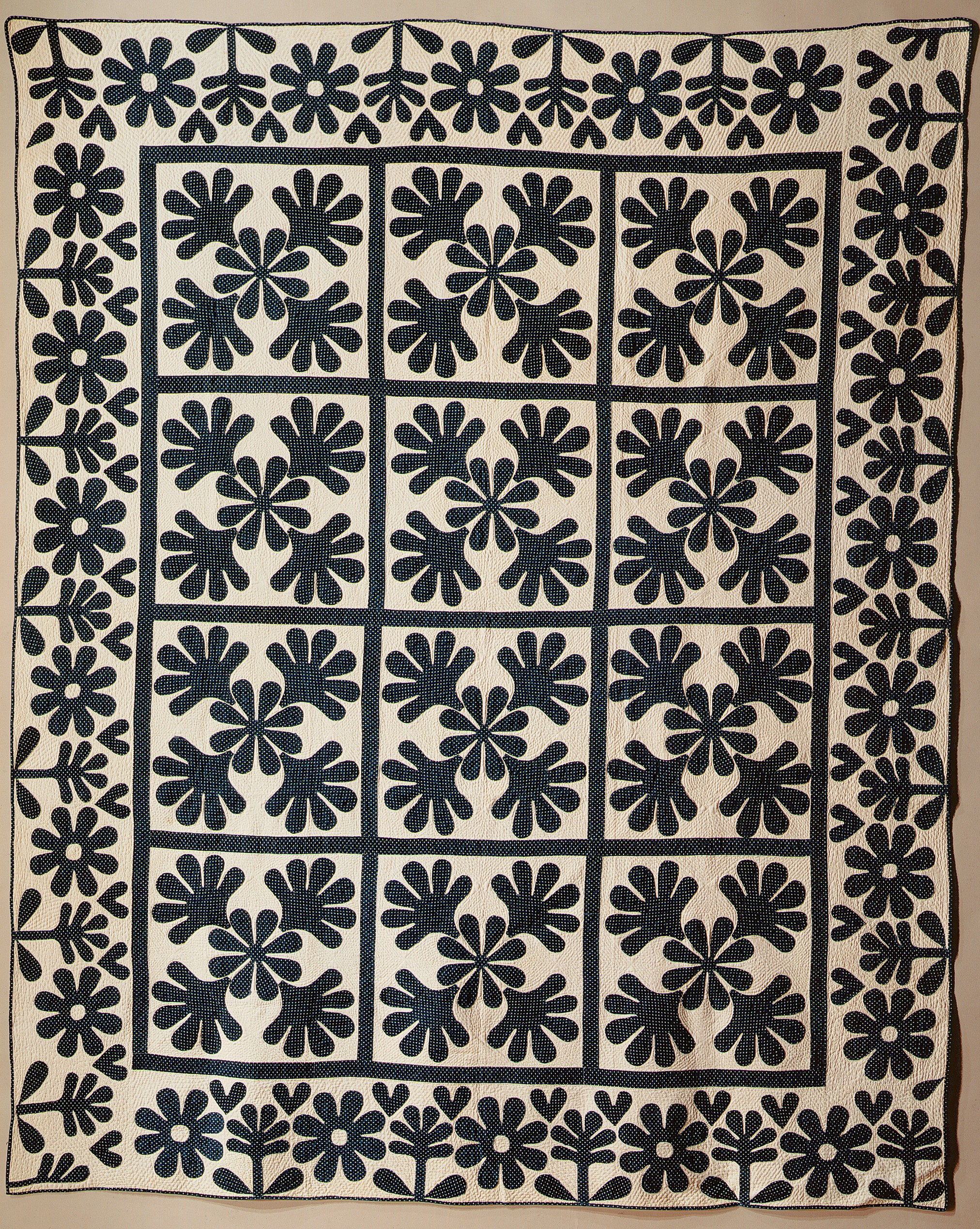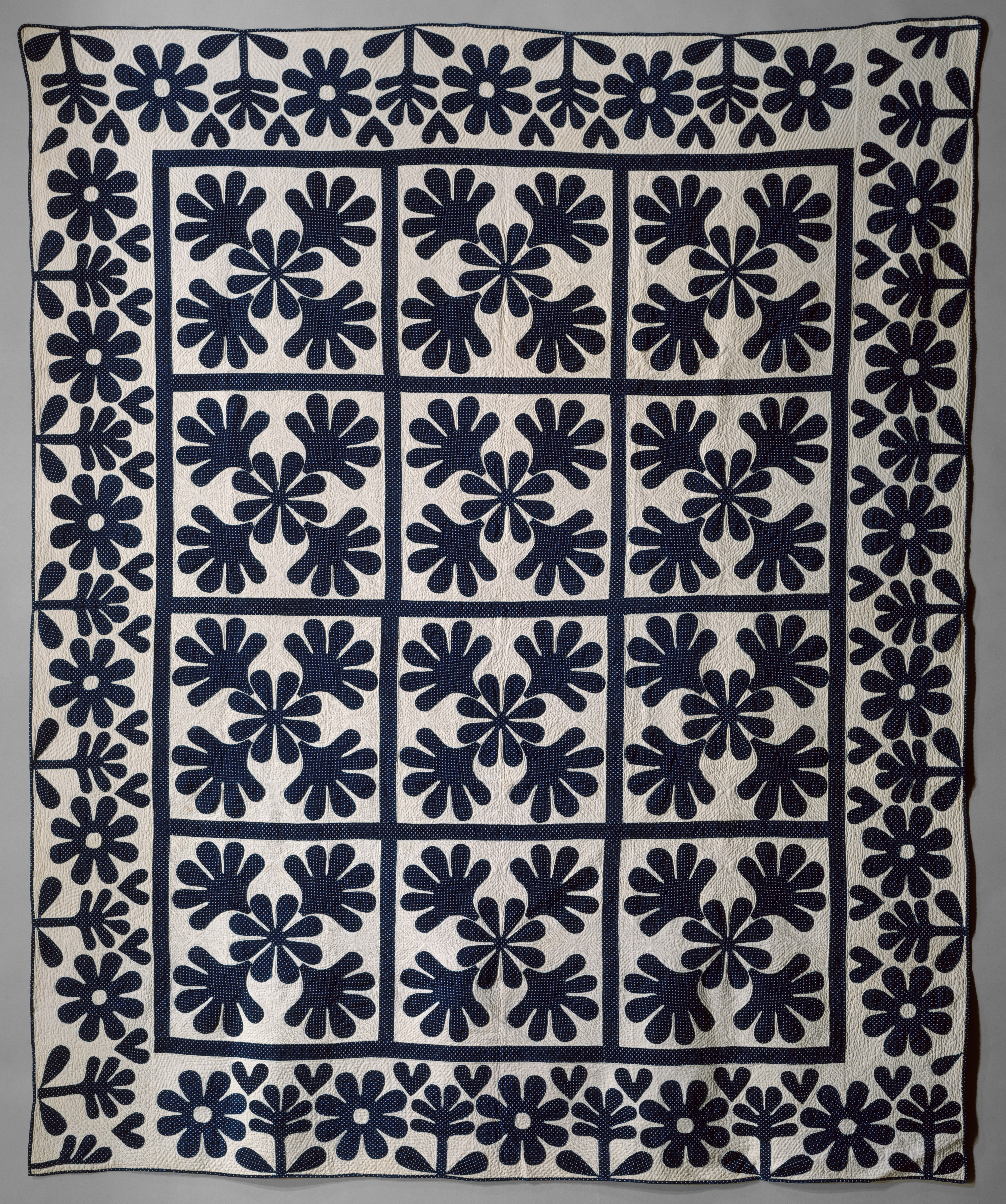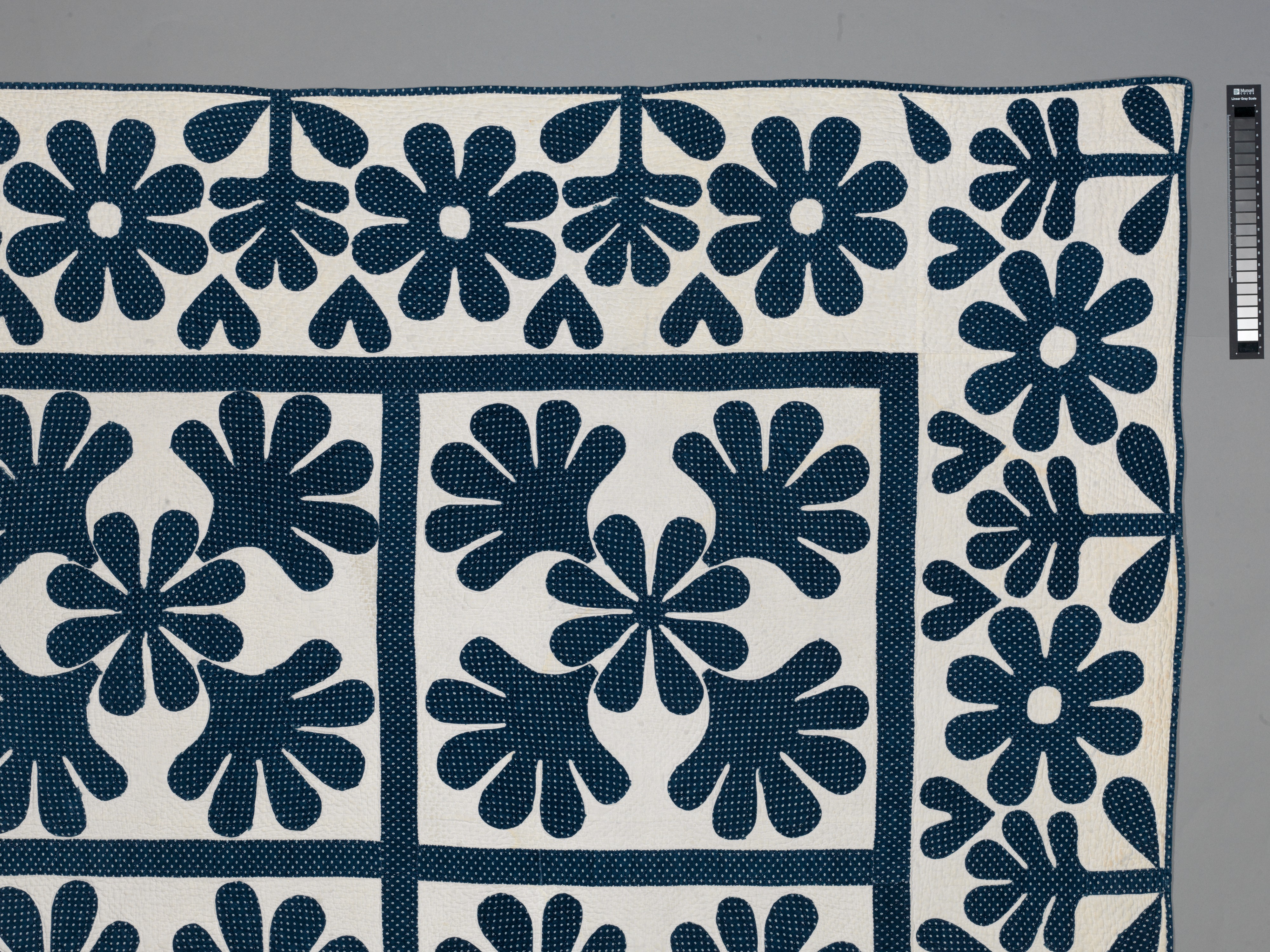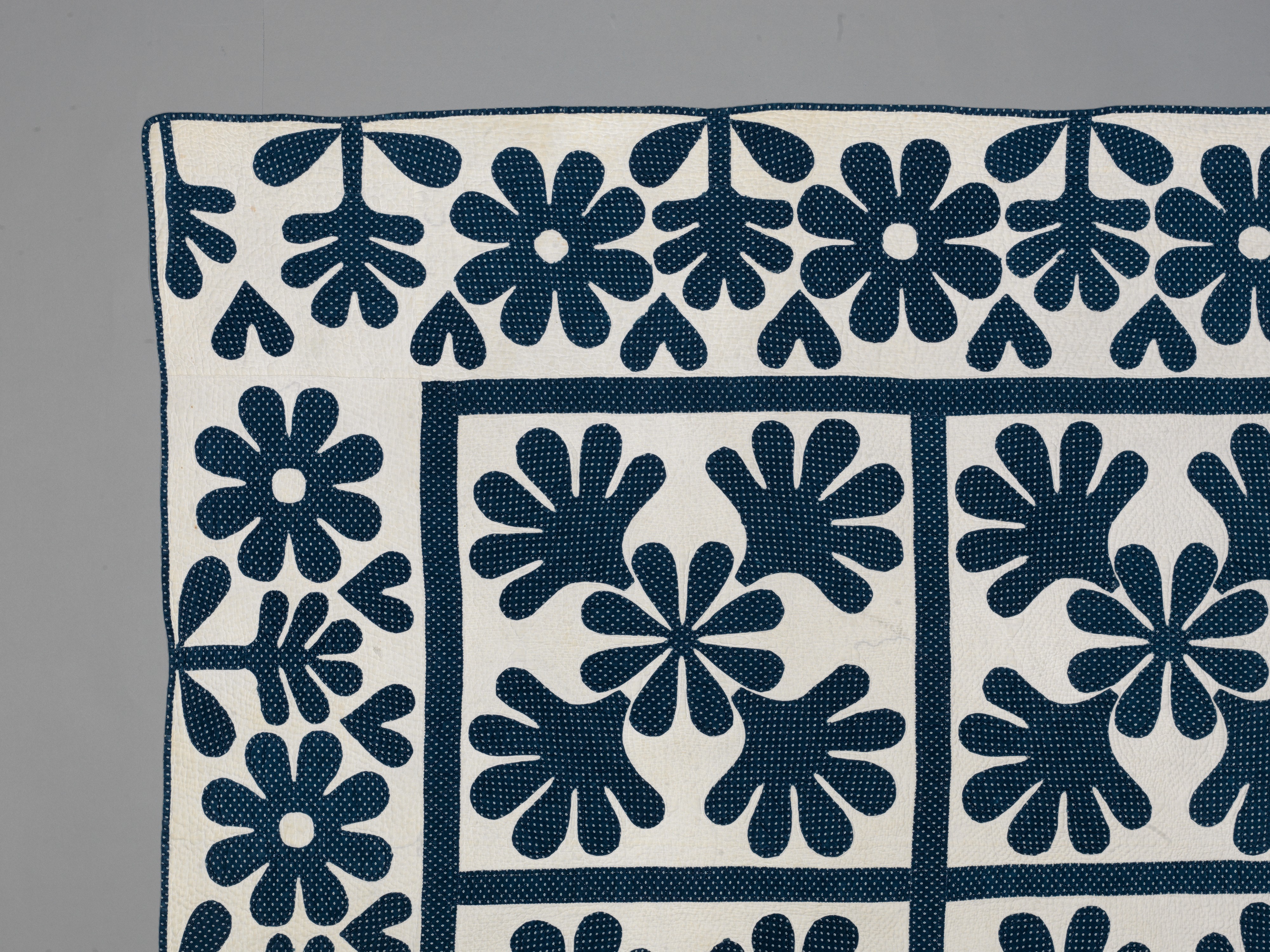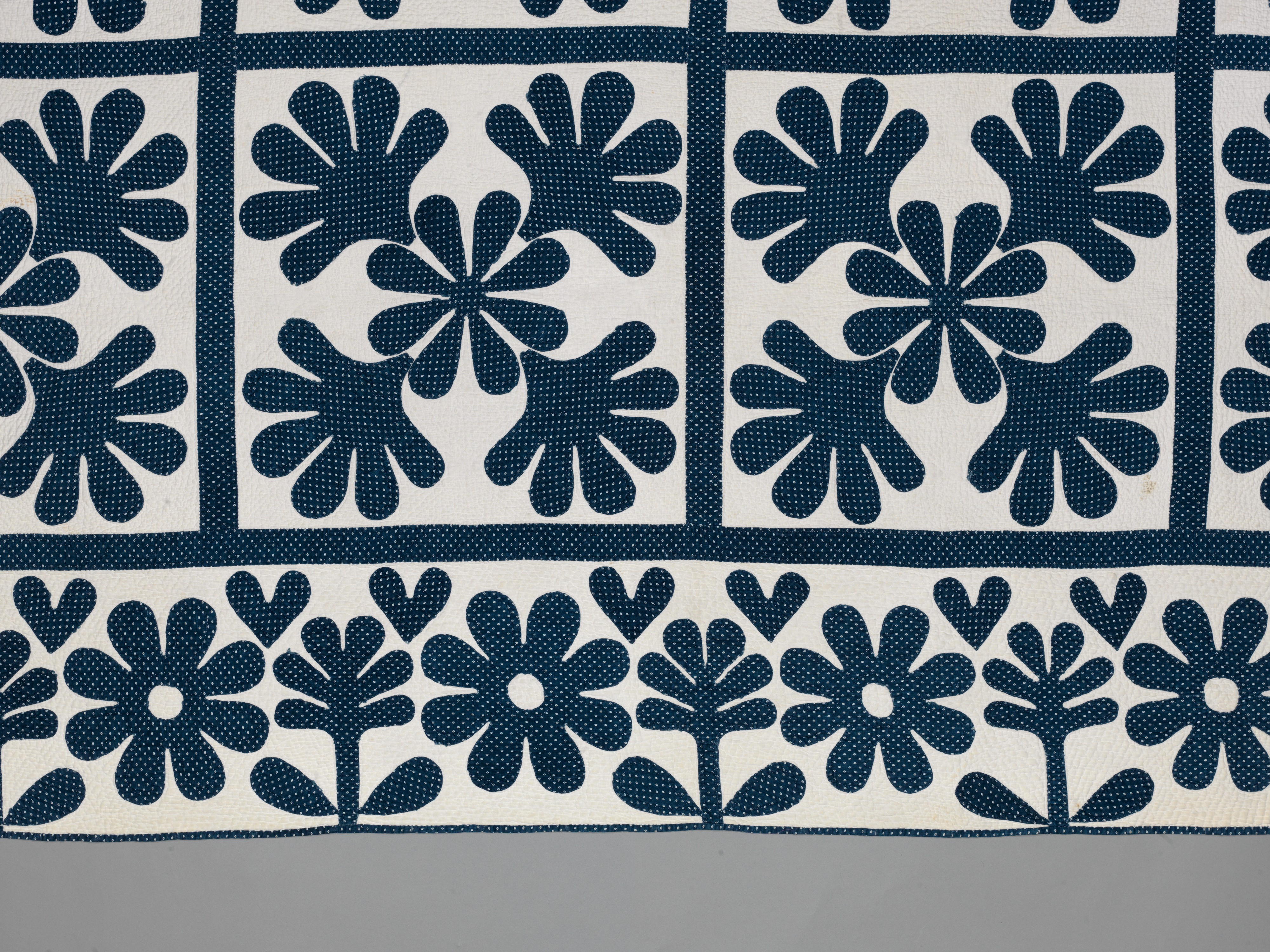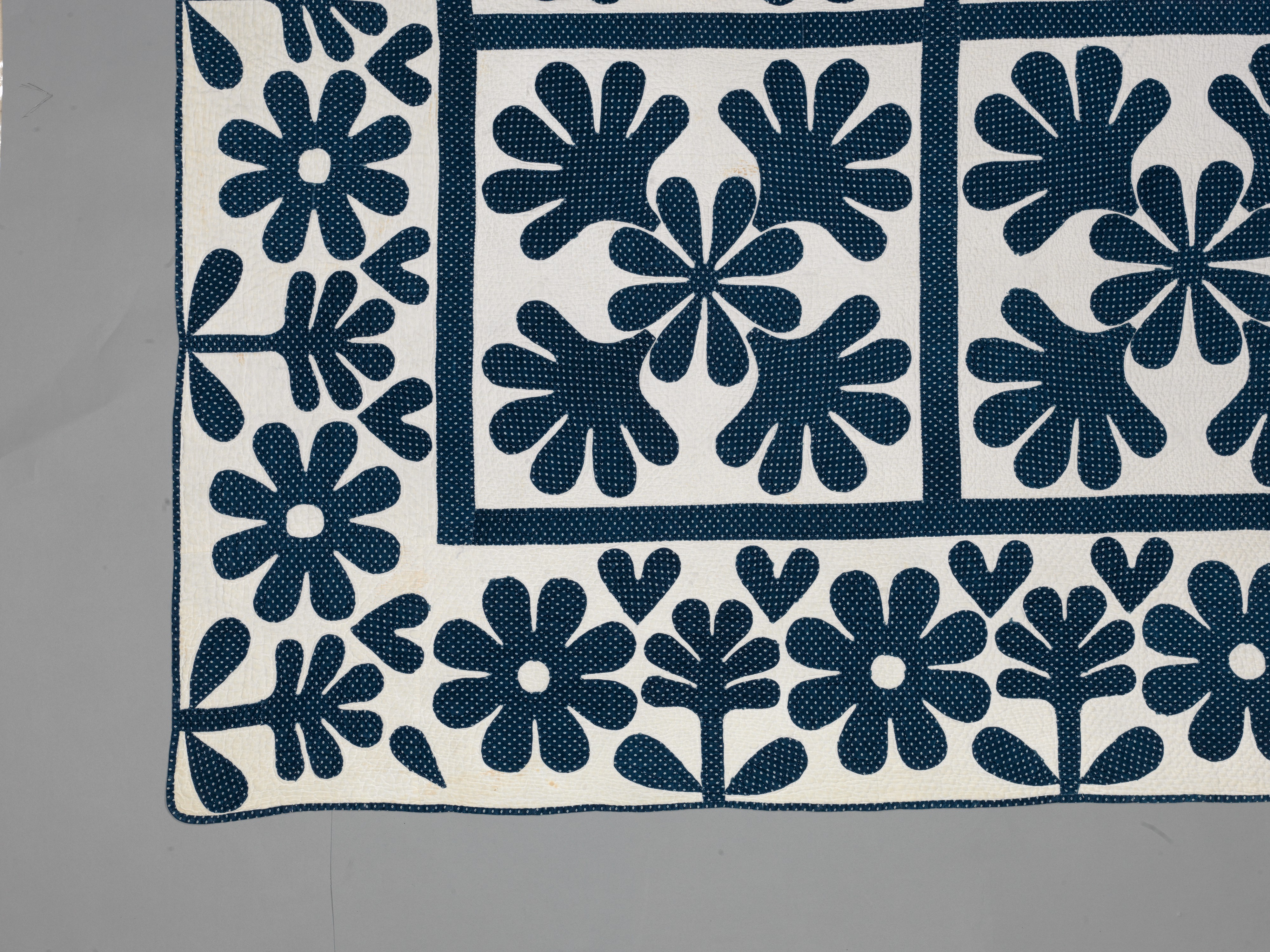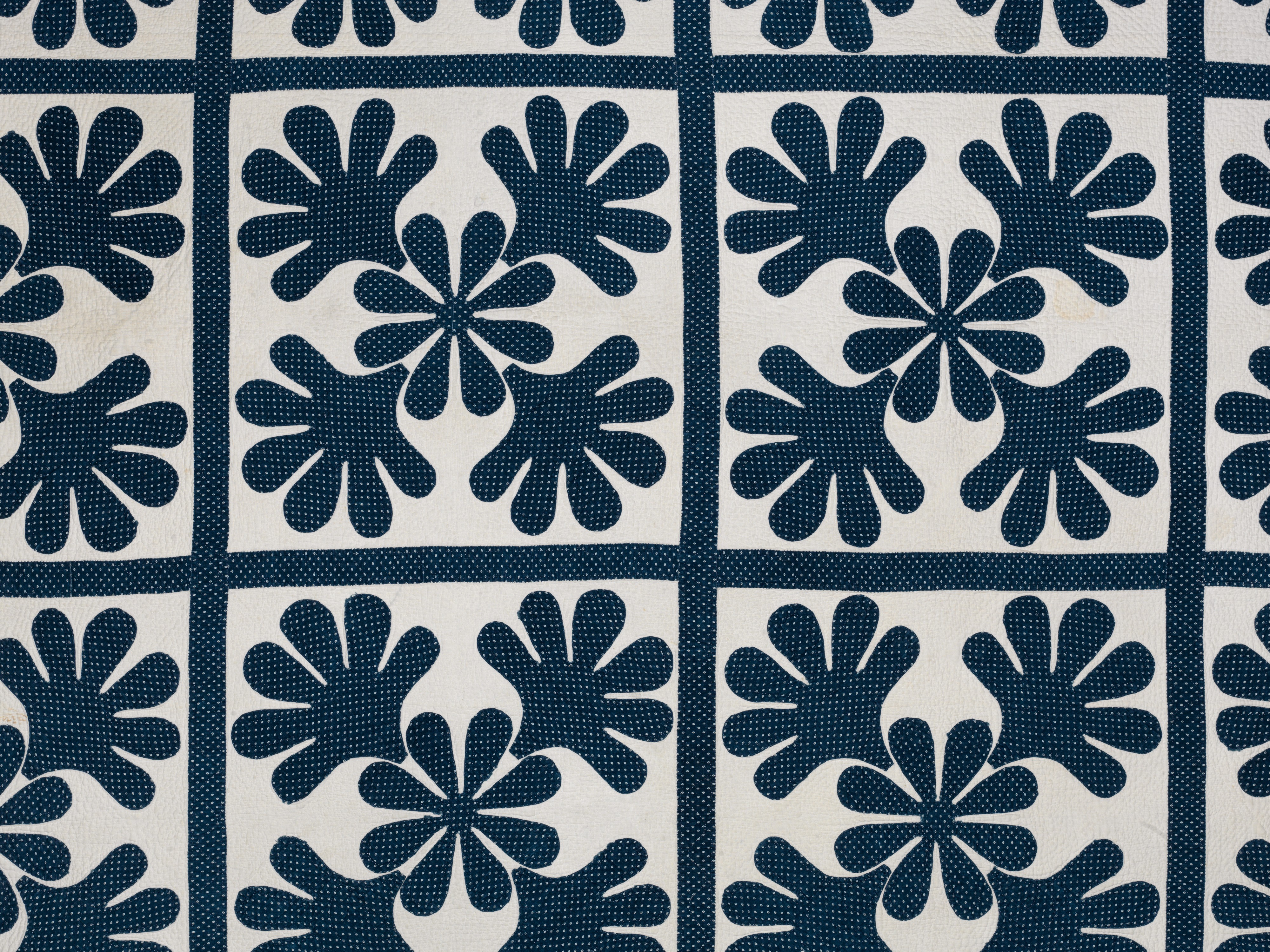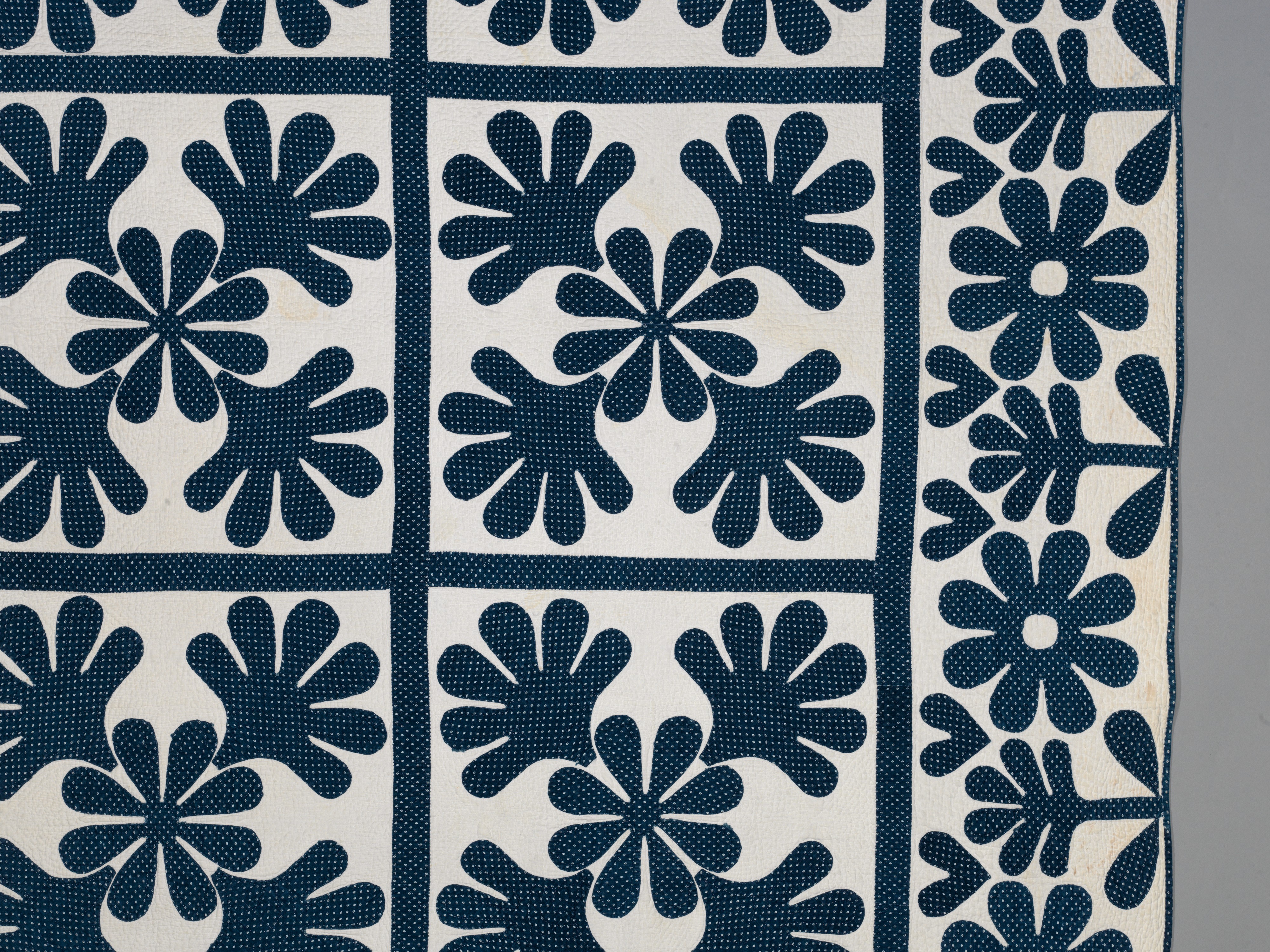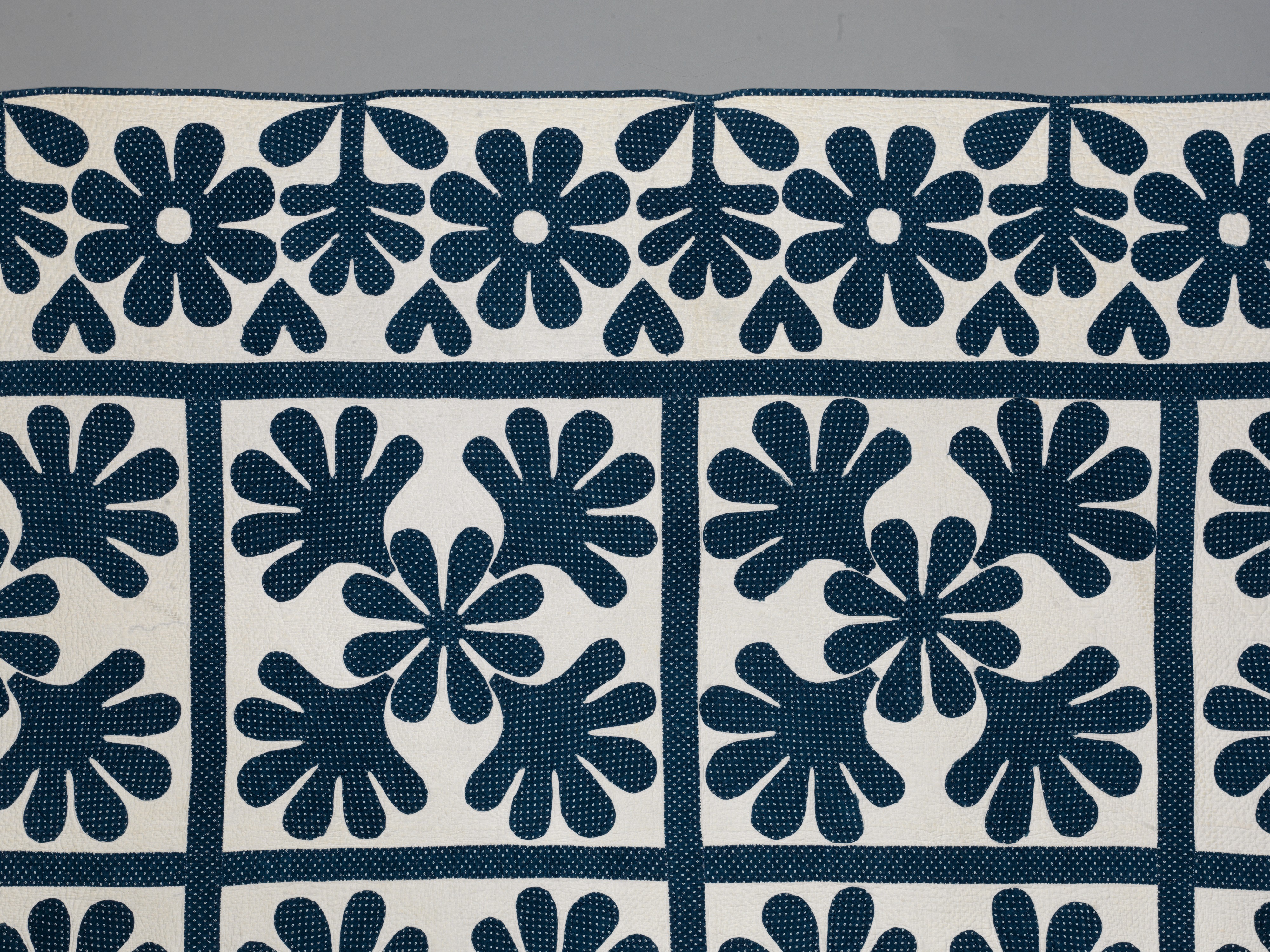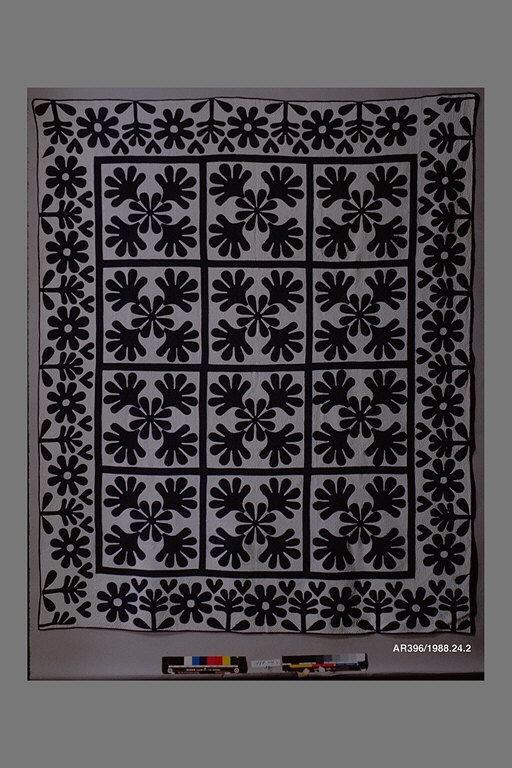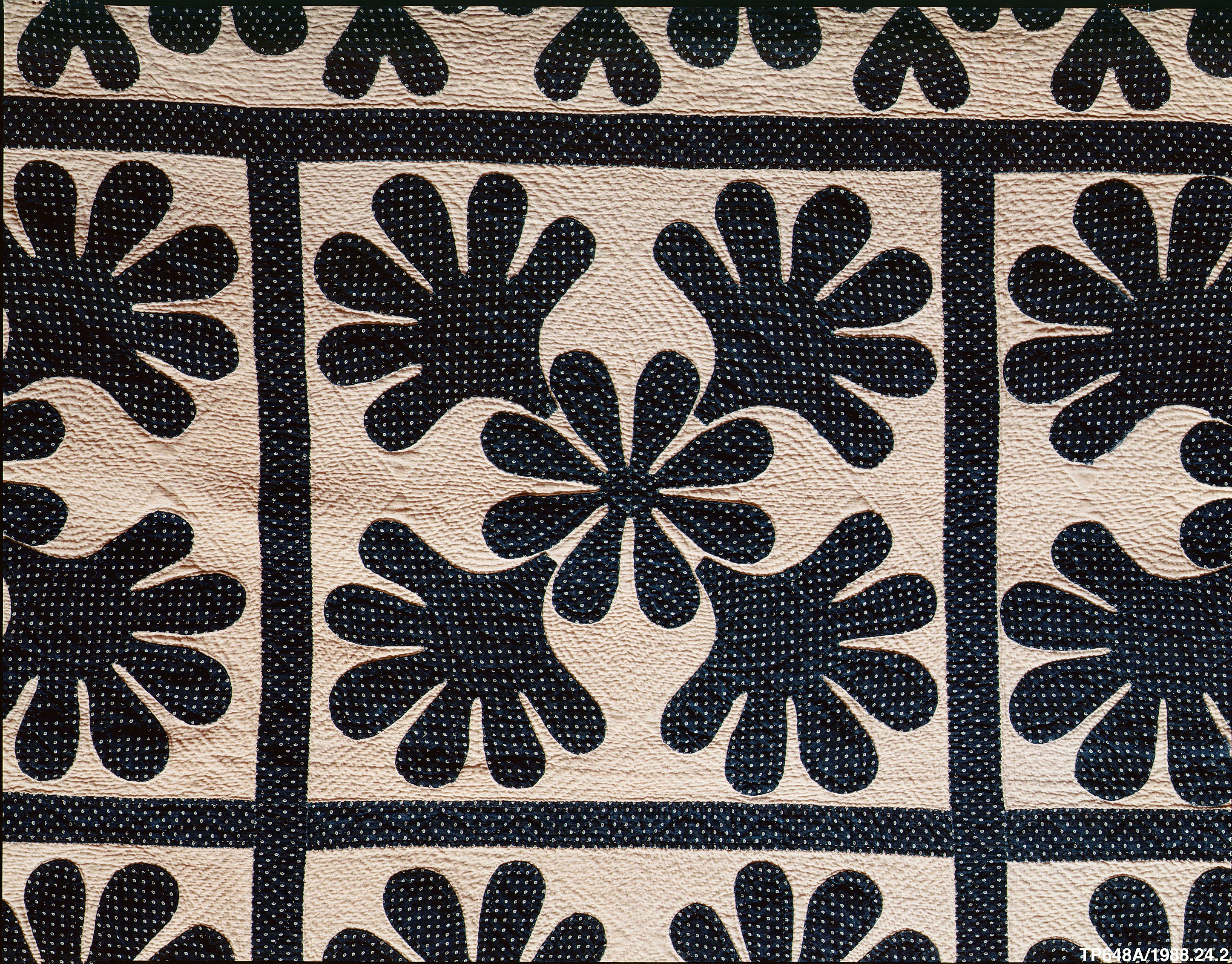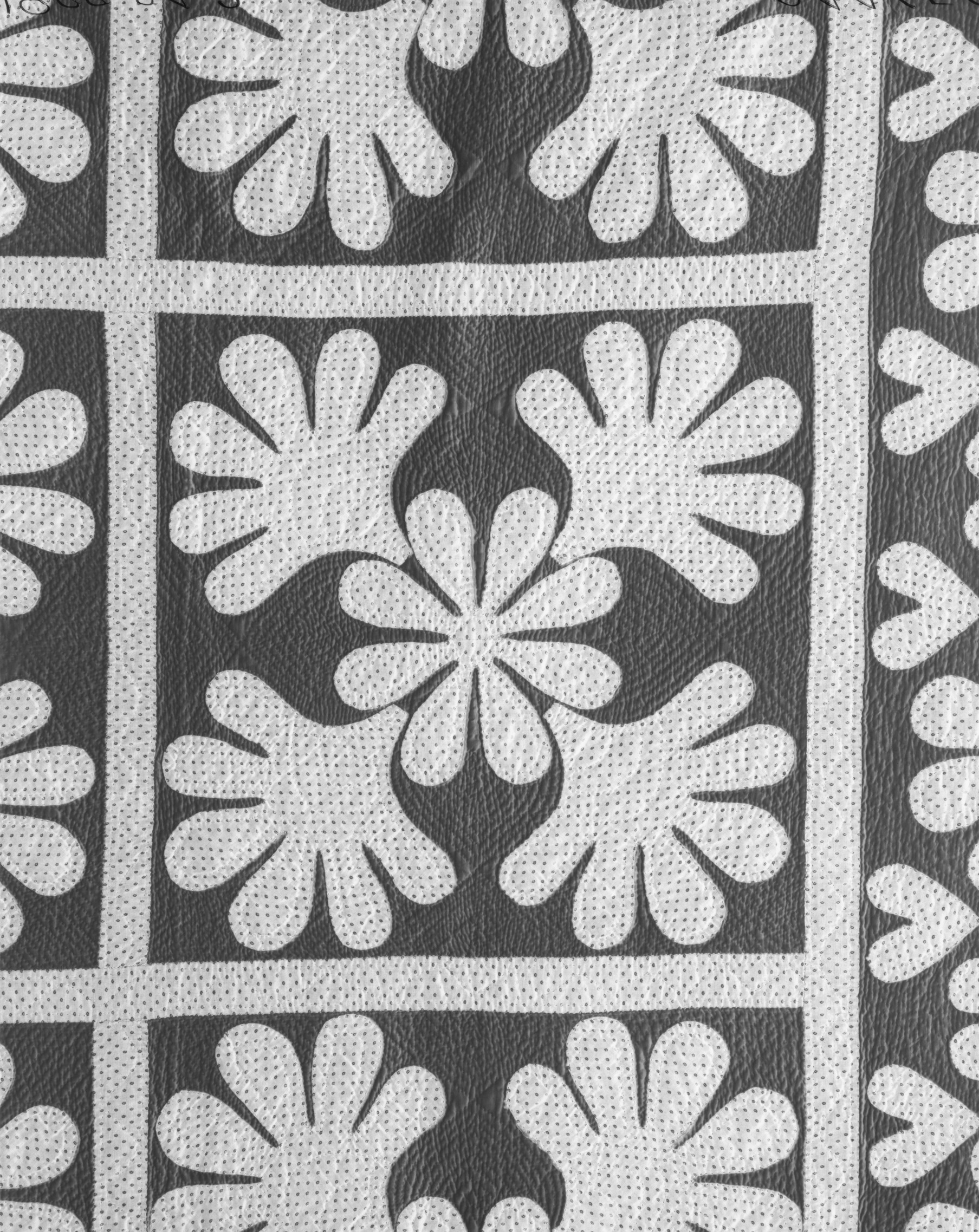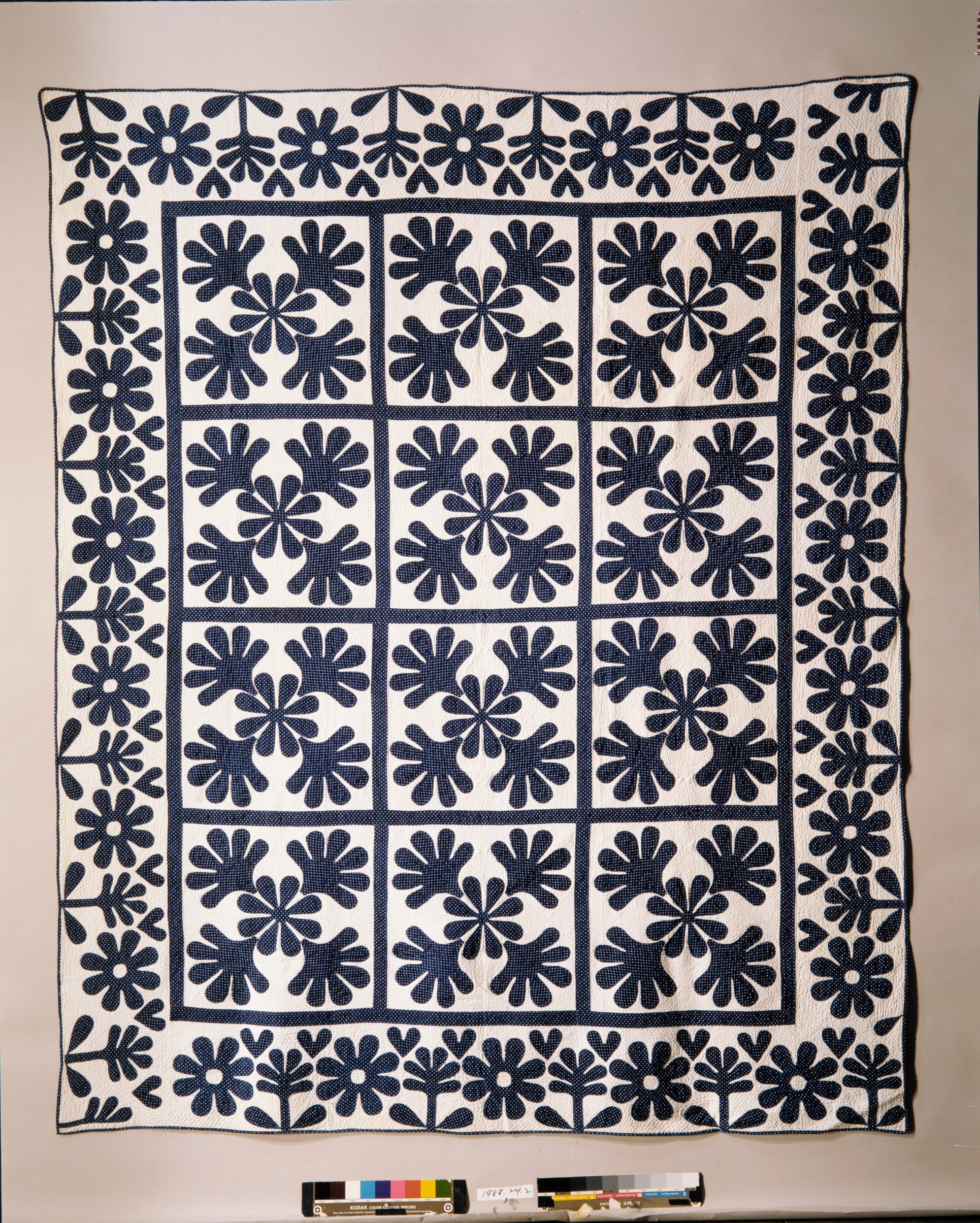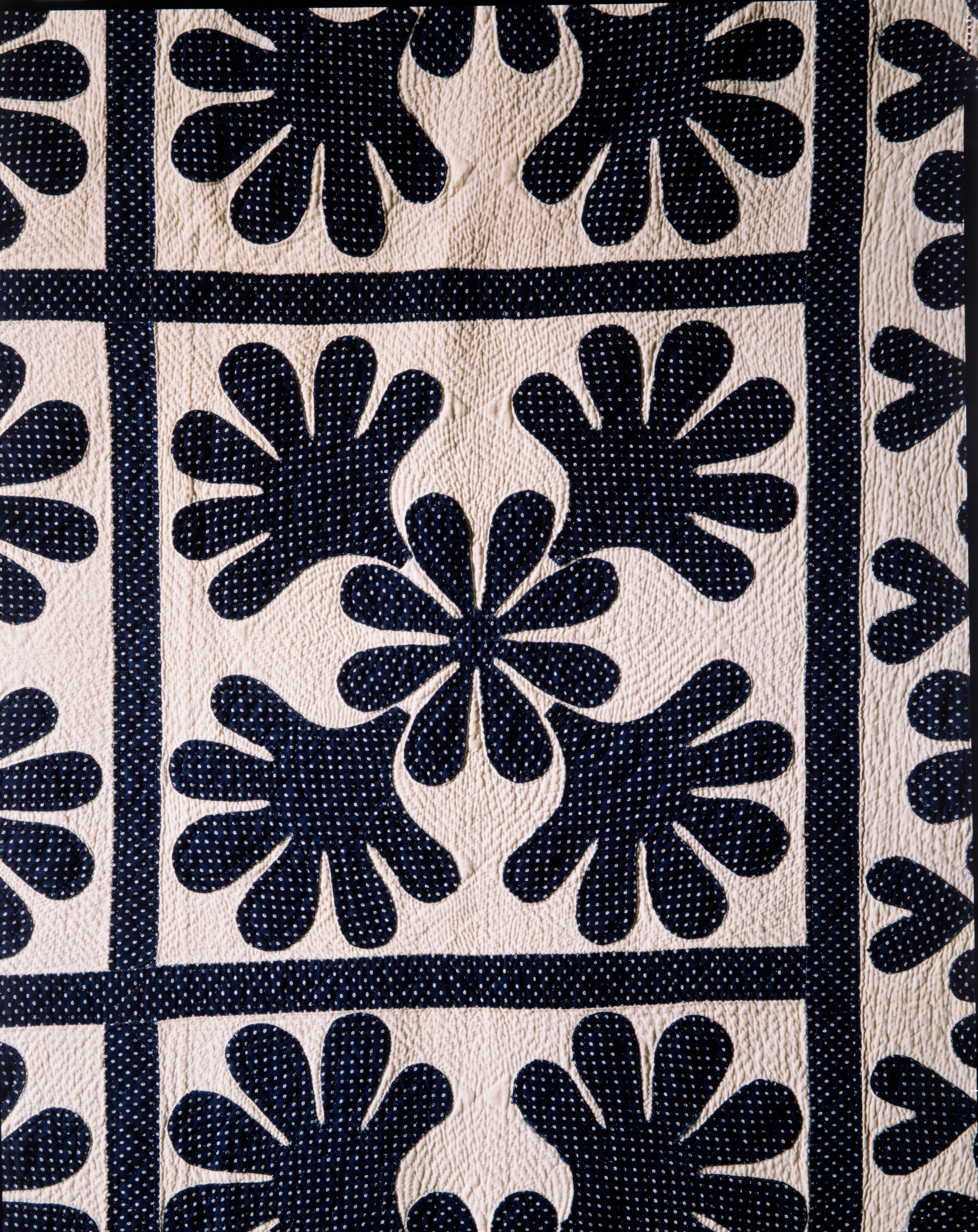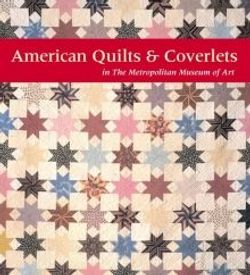Quilt, Oak Leaf pattern
Not on view
In this quilt, simple materials have been used to create a striking effect. Dark blue printed cotton is appliquéd on a white cotton ground in twelve blocks, each containing an organic motif traditionally known as an Oak Leaf. The border figures, edge binding, and sashing are cut from the same blue fabric. Because of the sprightly hearts that flank the flowers along the border, it is tempting to call this a bride's quilt. Its excellent condition and overall quality suggest that if it was not intended to be a bridal quilt, it is certainly a "best" quilt, one of a type used primarily to display the skills of its maker.
The quilt was found in Rhinebeck, Dutchess County New York, and shares certain characteristics with other mid-nineteenth-century quilts made in southeastern New York State. Rounded, abstracted figures such as the oak leaves seen here are found on many of these quilts. The shapes of the oak leaves and of the plants, hearts, and flowers that make up the border were most likely achieved by using cut-paper templates. These templates were made by folding a square or circle of paper in half, or in the case of the eight-petaled flowers, in quarters, and cutting out a design, in much the same way that children make cut-paper snowflakes. This technique is most commonly associated with the appliquéd quilts of Hawaii (see 2017.183), but it also seems to have been popular in the southeastern part of New York State and Maryland (see 1988.134). The Museum’s Album quilt from Fishkill in Dutchess County (52.103) has many blocks decorated with cut-paper designs, and the maker of our Pineapple quilt (56.179) from Glen Head in Nassau County used this technique to form the appliquéd designs.
Due to rights restrictions, this image cannot be enlarged, viewed at full screen, or downloaded.
This artwork is meant to be viewed from right to left. Scroll left to view more.


